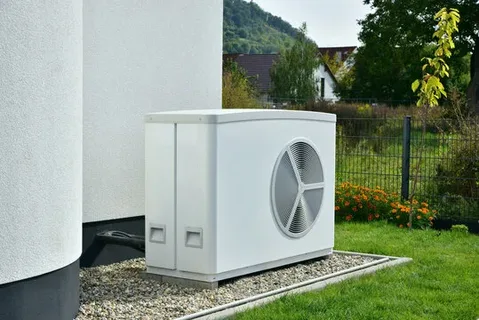Europe’s Path Toward Clean Heating and Energy Efficiency

Introduction
The Europe Heat Pump Market is growing rapidly as the region intensifies its efforts toward decarbonization and energy efficiency. Heat pumps, which extract renewable heat from the air, ground, or water, play a crucial role in replacing fossil-fuel-based heating systems in residential, commercial, and industrial sectors. Supported by the European Union’s Green Deal and Fit for 55 initiatives, the market is witnessing strong momentum driven by policy support, technological innovation, and consumer adoption. The transition toward electrified heating, combined with rising energy prices and carbon reduction goals, is positioning heat pumps as a cornerstone of Europe’s clean energy transformation.
Market Drivers
Government regulations and environmental targets are major catalysts for the Europe Heat Pump Market. Incentive programs such as subsidies, tax rebates, and renewable energy grants encourage homeowners and businesses to adopt heat pumps. Rising energy costs and the need to reduce dependence on imported fossil fuels are pushing demand for efficient heating technologies. Advances in inverter technology, refrigerant systems, and hybrid configurations have improved performance even in cold climates. Increasing construction of energy-efficient buildings and retrofitting projects further accelerate adoption. Public awareness about climate change and the shift toward zero-emission heating solutions also strengthen the market.
Market Challenges
Despite favorable conditions, the Europe Heat Pump Market faces challenges such as high upfront installation costs and limited consumer awareness in some regions. Retrofitting older buildings can be complex and expensive due to insulation and system compatibility issues. The shortage of skilled technicians and installers affects project timelines and system efficiency. Fluctuating electricity prices and regional differences in energy taxation can influence cost competitiveness. Supply chain disruptions and rising material costs, particularly for components like compressors and refrigerants, also impact production and delivery. Additionally, misinformation and lack of consumer education about long-term cost savings can slow adoption rates in certain markets.
Market Opportunities
Significant opportunities exist in residential retrofits, district heating integration, and hybrid heat pump systems. The growing trend of smart homes and connected energy systems creates opportunities for intelligent, IoT-enabled heat pumps. Governments are introducing stronger energy performance standards and green financing options, opening avenues for large-scale deployment. Partnerships between manufacturers, utilities, and real estate developers are fostering innovation in heat pump design and distribution. Technological advances in low-GWP refrigerants and high-efficiency compressors are enhancing sustainability and performance. Integration with renewable electricity from solar and wind sources further boosts potential. Eastern and Southern European countries, where market penetration remains low, present substantial growth opportunities.
Regional Insights
Northern and Western Europe dominate the heat pump market, driven by strong policy frameworks and mature infrastructure. Countries like Germany, France, the UK, and the Nordic nations lead adoption due to strict emission targets and supportive incentives. Scandinavia has achieved high penetration rates through early adoption of air-source and ground-source heat pumps. Southern Europe, including Italy and Spain, is seeing rising demand for air-to-air systems for both heating and cooling. Eastern Europe, supported by EU funding programs, is emerging as a key growth area. Regional collaboration, R&D investments, and harmonized regulations are further driving market expansion across the continent.
Future Outlook
The Europe Heat Pump Market is expected to continue its strong growth trajectory, supported by regulatory pressure and consumer demand for sustainable solutions. As electrification of heating accelerates, heat pumps will become the preferred technology for new constructions and energy retrofits. Technological innovations will further reduce costs and enhance efficiency, making systems accessible to a wider consumer base. Integration with smart grids, renewable generation, and energy storage will create a more resilient and flexible energy ecosystem. By 2030, Europe aims to deploy millions of heat pumps, significantly reducing emissions and contributing to the region’s climate neutrality goals.
Conclusion
The Europe Heat Pump Market stands at the forefront of Europe’s clean heating revolution. With supportive policies, innovative technologies, and increasing consumer awareness, heat pumps are becoming a central pillar of the continent’s energy transition. While challenges such as upfront costs and workforce shortages persist, long-term benefits in energy savings, emission reduction, and sustainability outweigh these barriers. Continued collaboration between policymakers, manufacturers, and consumers will ensure the widespread adoption of heat pumps, helping Europe progress toward its net-zero targets and energy independence vision.
- Art
- Causes
- Crafts
- Dance
- Drinks
- Film
- Fitness
- Food
- Oyunlar
- Gardening
- Health
- Home
- Literature
- Music
- Networking
- Other
- Party
- Religion
- Shopping
- Sports
- Theater
- Wellness


